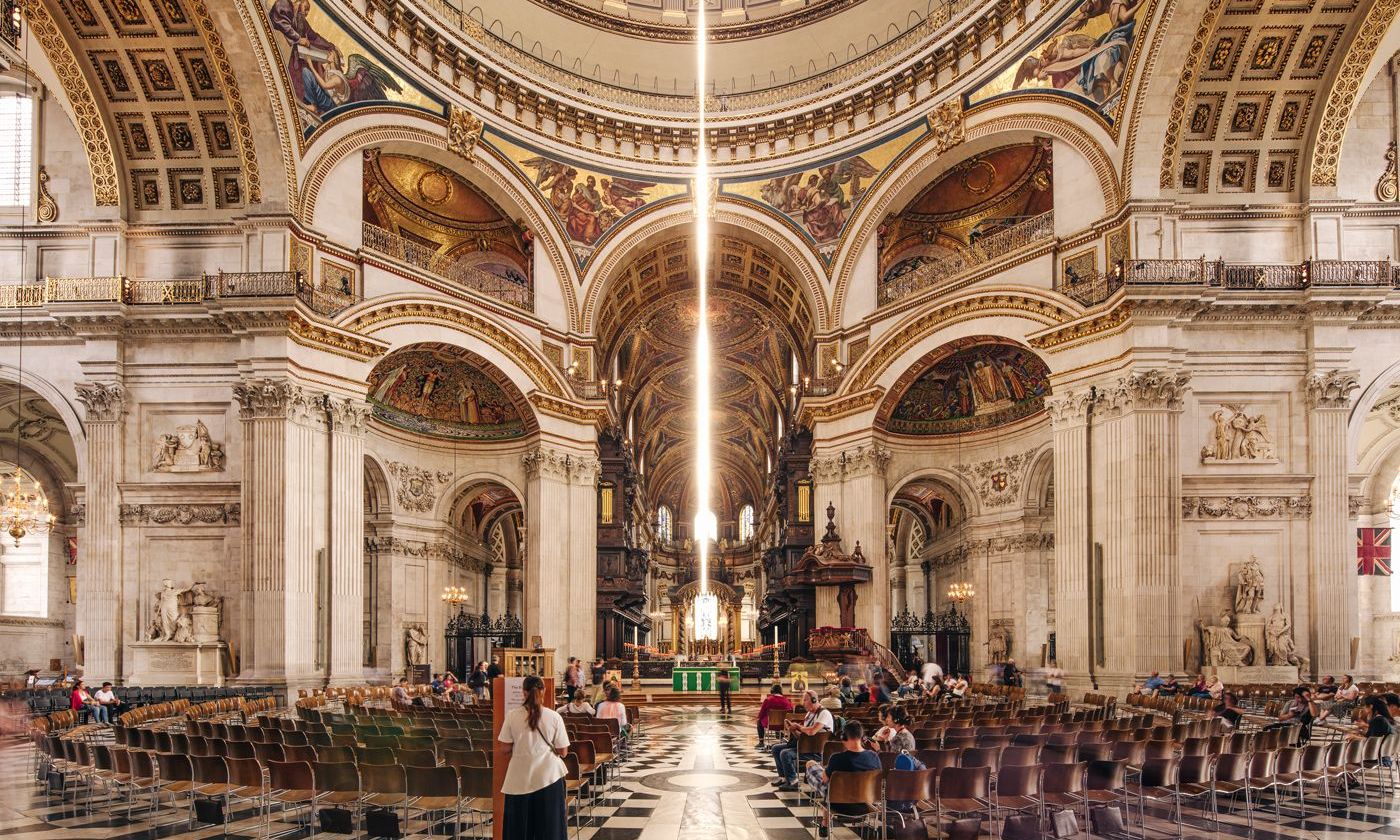Pablo Valbuena's Aura, a sound-activated light installation which hangs over the transept of St Paul's Cathedral London Design Festival. Supported by Bloomberg Philanthropies. Photograph: © Ed Reeve
Christopher Wren—one of the giants of British architecture, a master of light and mathematics, and creator of London landmarks including St Paul’s Cathedral, St James's Piccadilly and the Royal Hospital Chelsea—died in 1723 after nearly 50 years at the top of what was still a hazily identified profession of architect. Part of his interest to later generations is his status as a polymath mathematician-architect, caught up with abiding interests in astronomy, anatomy and any number of what are now regarded as scientific specialisms.
London has been the centre of many of the celebrations—from schools events to academic conferences—of the life of its most famous architectural son, promoted by Wren 300, a knowledge resource supported by the Georgian Group and partners including the Royal Institute of British Architects.
Wren's name is indelibly associated with St Paul's, his largest and most complex commission, which acquired a new status as a graphic emblem of resistance, when the white-domed cathedral stood out, in newsreels and press photography, among the searchlights, dust clouds and bombed ruins of the City of London during the Second World War.
The cathedral has been the centre of many of the celebrations of Wren's tri-centenary, including a light art piece, Aura, commissioned by the London Design Festival and Bloomberg Philanthropy from the French-based Spanish artist Pablo Valbuena. A second commission for the festival, Moritz Waldemeyer's Halo, is installed at Wren's first domed church, St Stephen Walbrook, in the City of London; a piece whose light-enhanced pendulum sweeps low over the rim of Henry Moore's celebrated 1972 marble altar.

